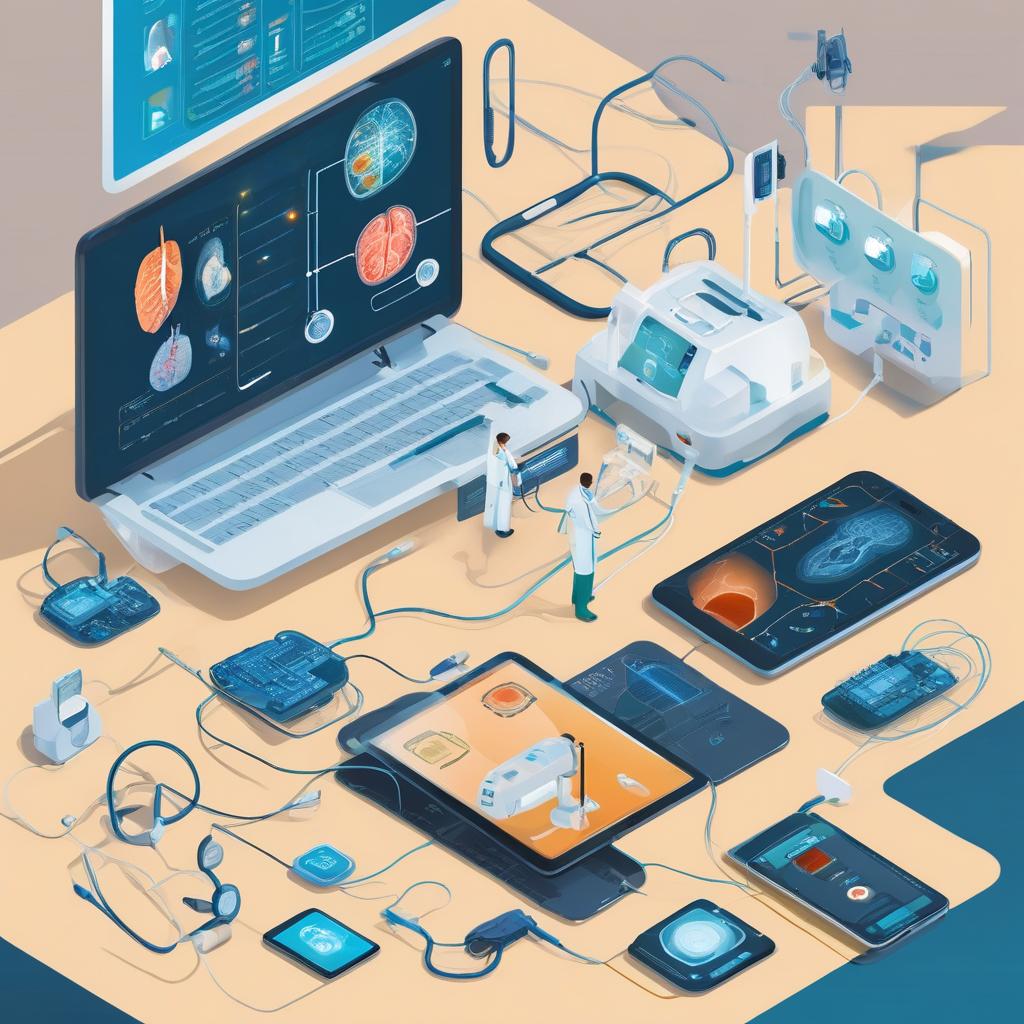In today’s digital age, technology has revolutionized the way we approach healthcare, making it more accessible and convenient than ever before. One area where technological advancements have made a significant impact is remote health monitoring. With the development of innovative devices and applications, individuals can now monitor their health from the comfort of their own homes, allowing for early detection of health issues and proactive management of chronic conditions. In this comprehensive guide, we’ll explore the world of remote health monitoring devices, from the technology behind them to the benefits they offer for both patients and healthcare providers. So, let’s dive in and discover how these devices are shaping the future of healthcare!
Understanding Remote Health Monitoring
Embracing the Power of Technology
Remote health monitoring devices leverage the power of technology to collect and transmit vital health data from patients to healthcare providers in real-time. These devices come in various forms, from wearable fitness trackers and smartwatches to specialized medical devices such as blood pressure monitors, glucometers, and pulse oximeters. By continuously monitoring key health metrics such as heart rate, blood pressure, blood glucose levels, and oxygen saturation, these devices provide valuable insights into a patient’s health status and allow for early intervention in case of any abnormalities or fluctuations. The convenience and ease of use of these devices make them invaluable tools for individuals looking to take a proactive approach to their health and well-being.
Empowering Patients and Healthcare Providers
One of the key benefits of remote health monitoring devices is the empowerment they provide to both patients and healthcare providers. For patients, these devices offer greater convenience and flexibility in managing their health, allowing them to monitor their vital signs and symptoms from the comfort of their own homes. This can be particularly beneficial for individuals with chronic conditions such as diabetes, hypertension, or heart disease, who require regular monitoring and management of their health. By providing patients with real-time access to their health data, remote monitoring devices enable them to take a more active role in their healthcare journey, leading to improved outcomes and quality of life.
Developing Remote Health Monitoring Devices
Harnessing Cutting-Edge Technology
The development of remote health monitoring devices relies on cutting-edge technologies such as sensors, wireless communication, and data analytics. These devices are equipped with sensors that capture physiological data such as heart rate, blood pressure, and body temperature, which is then transmitted wirelessly to a smartphone, tablet, or cloud-based platform for analysis. Advanced algorithms and machine learning techniques are used to analyze the data and identify patterns or trends that may indicate changes in a patient’s health status. This data can then be shared with healthcare providers in real-time, allowing for timely intervention and personalized care. By harnessing the power of technology, remote health monitoring devices enable more efficient and effective healthcare delivery, leading to better outcomes for patients.
Ensuring Accuracy and Reliability
One of the key challenges in developing remote health monitoring devices is ensuring the accuracy and reliability of the data they collect. Unlike traditional medical devices used in clinical settings, remote monitoring devices must be able to provide accurate measurements and insights in a variety of real-world conditions. This requires rigorous testing and validation to ensure that the devices perform consistently and reliably across different populations and environments. Manufacturers must adhere to industry standards and regulations governing the design, manufacturing, and performance of medical devices, such as the FDA’s Quality System Regulation (QSR) and ISO 13485. Additionally, ongoing monitoring and maintenance are essential to ensure that the devices remain accurate and reliable over time, providing patients and healthcare providers with confidence in the data they provide.
Selling Remote Health Monitoring Devices
Identifying Market Opportunities
Before launching a remote health monitoring device, it’s important to identify market opportunities and assess the demand for your product. Conduct market research to understand the needs and preferences of your target audience, as well as the competitive landscape. Identify key trends and emerging technologies in the remote monitoring space, and explore opportunities for differentiation and innovation. Consider factors such as usability, affordability, and connectivity when designing your device, and strive to create a product that addresses unmet needs and pain points in the market. By conducting thorough market research, you’ll be better positioned to develop a successful remote health monitoring device that meets the needs of both patients and healthcare providers.
Building Strategic Partnerships
In addition to developing a high-quality product, building strategic partnerships can help you successfully market and sell your remote health monitoring device. Partner with healthcare providers, hospitals, and clinics to demonstrate the value of your device and gain access to their patient populations. Collaborate with telehealth platforms and digital health companies to integrate your device into their existing offerings and reach a wider audience. Consider partnering with insurance companies and healthcare payers to explore reimbursement opportunities for remote monitoring services. By building strategic partnerships, you’ll be able to leverage existing networks and resources to promote your device and drive adoption among patients and healthcare providers.
Ensuring Data Security and Privacy
Protecting Patient Data
As with any healthcare technology, ensuring the security and privacy of patient data is paramount when developing and selling remote health monitoring devices. These devices collect sensitive health information that must be protected from unauthorized access, disclosure, or misuse. Implement robust security measures such as encryption, authentication, and access controls to safeguard patient data throughout the data lifecycle. Ensure compliance with regulations such as HIPAA (Health Insurance Portability and Accountability Act) and GDPR (General Data Protection Regulation), which govern the collection, storage, and transmission of personal health information. Additionally, educate patients and healthcare providers about the importance of data security and privacy, and provide clear and transparent policies regarding data collection, storage, and sharing. By prioritizing data security and privacy, you’ll build trust and confidence among patients and healthcare providers, leading to greater adoption and acceptance of your remote health monitoring device.
Conclusion
Remote health monitoring devices represent a transformative innovation in healthcare, empowering patients to take control of their health and enabling healthcare providers to deliver more personalized and proactive care. By harnessing cutting-edge technology, ensuring accuracy and reliability, and addressing data security and privacy concerns, developers and manufacturers can create and sell remote monitoring devices that make a meaningful impact on patient outcomes. As the demand for remote healthcare solutions continues to grow, there are ample opportunities for entrepreneurs and innovators to develop and market innovative devices that meet the evolving needs of patients and healthcare providers alike. So, are you ready to embark on this journey and shape the future of remote health monitoring?


